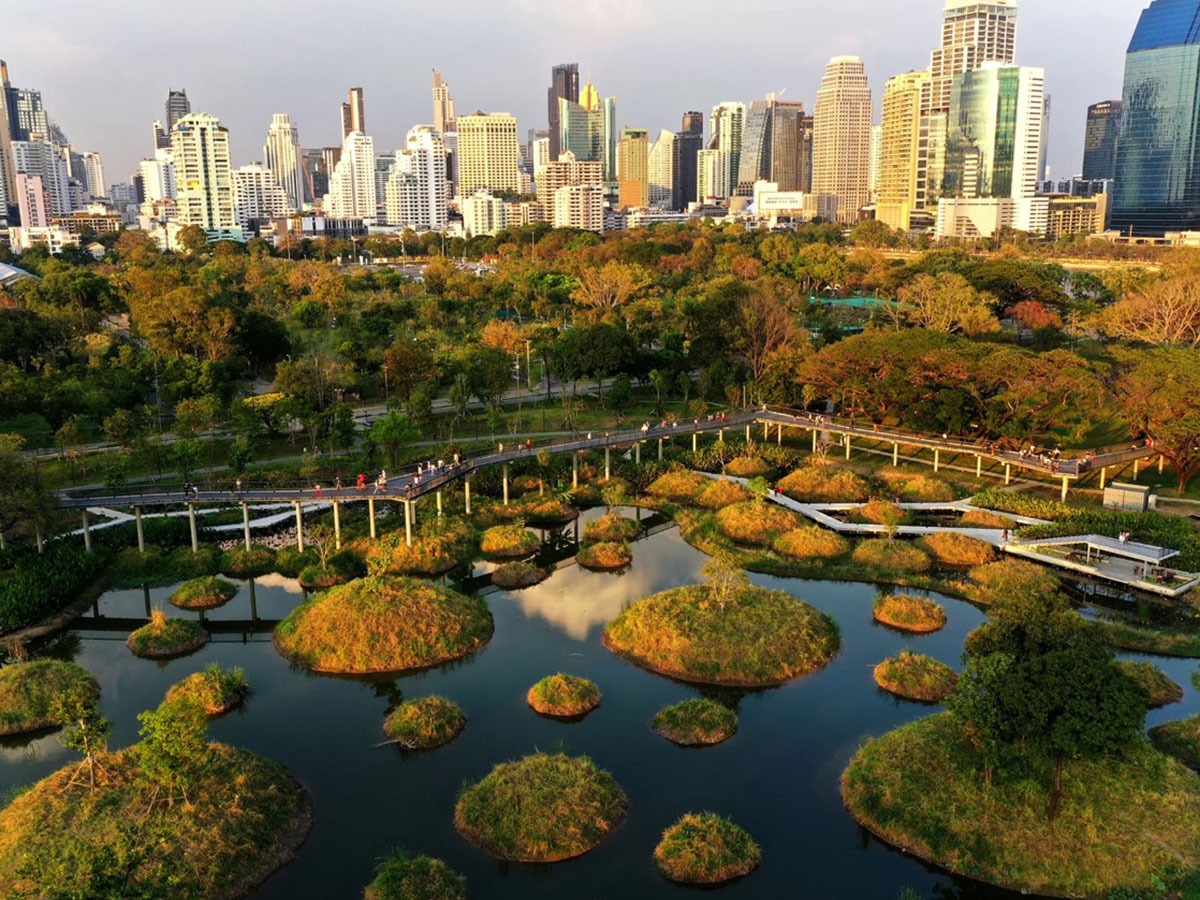
Why Transforming Cities into ‘Sponges’ Could Help Combat Flooding
Kongjian Yu, a Chinese landscape architect and urban planner, redefines how cities manage floodwaters by advocating for nature-based solutions over traditional high-tech, concrete-based infrastructure. As intense storms become more frequent, Yu’s approach offers an innovative alternative to the conventional methods many cities currently rely on.
The Rise of Sponge Cities
For over a decade, Yu and his firm, Turenscape, have been pioneering the concept of “sponge cities.” These cities are designed to absorb and retain stormwater, naturally releasing it into the environment. Unlike concrete solutions, which can be costly, inflexible, and prone to failure, sponge cities use natural elements like parks, wetlands, rain gardens, and permeable pavements to manage water flow. Yu compares cities that rely on traditional flood defences to a person with hardened arteries, warning that blockages and overflows can lead to catastrophic outcomes.
Challenges with Conventional Methods
Yu criticizes the widespread reliance on concrete or pipe-based flood mitigation methods. He argues that these approaches are not only expensive and difficult to maintain but can also increase a city’s vulnerability to flooding. He points out that the belief in controlling water with higher flood walls or stronger dams is misguided and often counterproductive.

A Natural Solution: Creating Porous Environments
Yu’s sponge city projects focus on creating areas with porous earth where local plants can thrive with minimal maintenance. These natural landscapes help to slow down water flow, reduce flooding, and restore ecosystems. Turenscape has completed over 1,000 such projects in more than 250 cities worldwide, including many in China, where the concept has been integrated into national urban planning since 2015.
The Debate: Sponge Cities vs. Traditional Engineering
While sponge cities have shown promise, some experts argue that they may not be sufficient to handle extreme rainfall. For example, areas like Meizhou in Guangdong, which have implemented sponge city initiatives, experienced severe flooding during particularly heavy rains. Experts suggest that sponge infrastructure should be complemented by traditional engineering solutions, such as dams and embankments, to tackle the most intense storms.

Expanding the Vision: Sponge Cities Beyond China
Despite the challenges, Yu believes that expanding sponge city initiatives can significantly enhance a city’s resilience to flooding. His projects are now being implemented beyond China, such as in Bangkok’s Benjakitti Forest Park, where a former tobacco factory was transformed into a wetland that absorbs stormwater and provides a green space for the community.
Beyond Flood Prevention: Additional Environmental Benefits
Sponge cities offer more than just flood mitigation. They can help reduce urban temperatures, improve air quality, and enhance biodiversity. In Wuhan, for example, sponge city projects have not only helped manage rainwater but also improved local air quality and biodiversity. These natural landscapes are also capable of sequestering carbon and providing pleasant environments for residents.

Recognition and Future Impact
Kongjian Yu’s pioneering work has earned international recognition, including the prestigious Oberlander Prize. His vision represents a significant shift towards more sustainable, nature-based urban planning solutions. As cities around the world grapple with the increasing threats posed by climate change, Yu’s sponge cities offer a promising way forward by harnessing natural processes to build more resilient urban environments.


